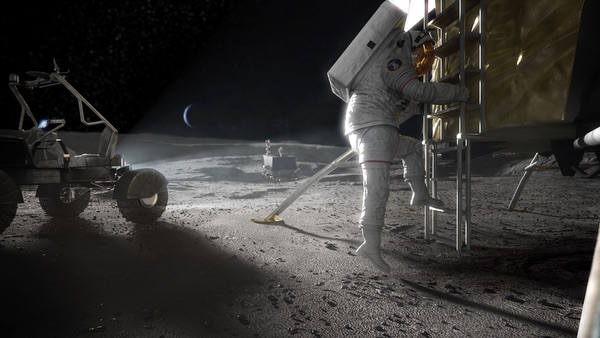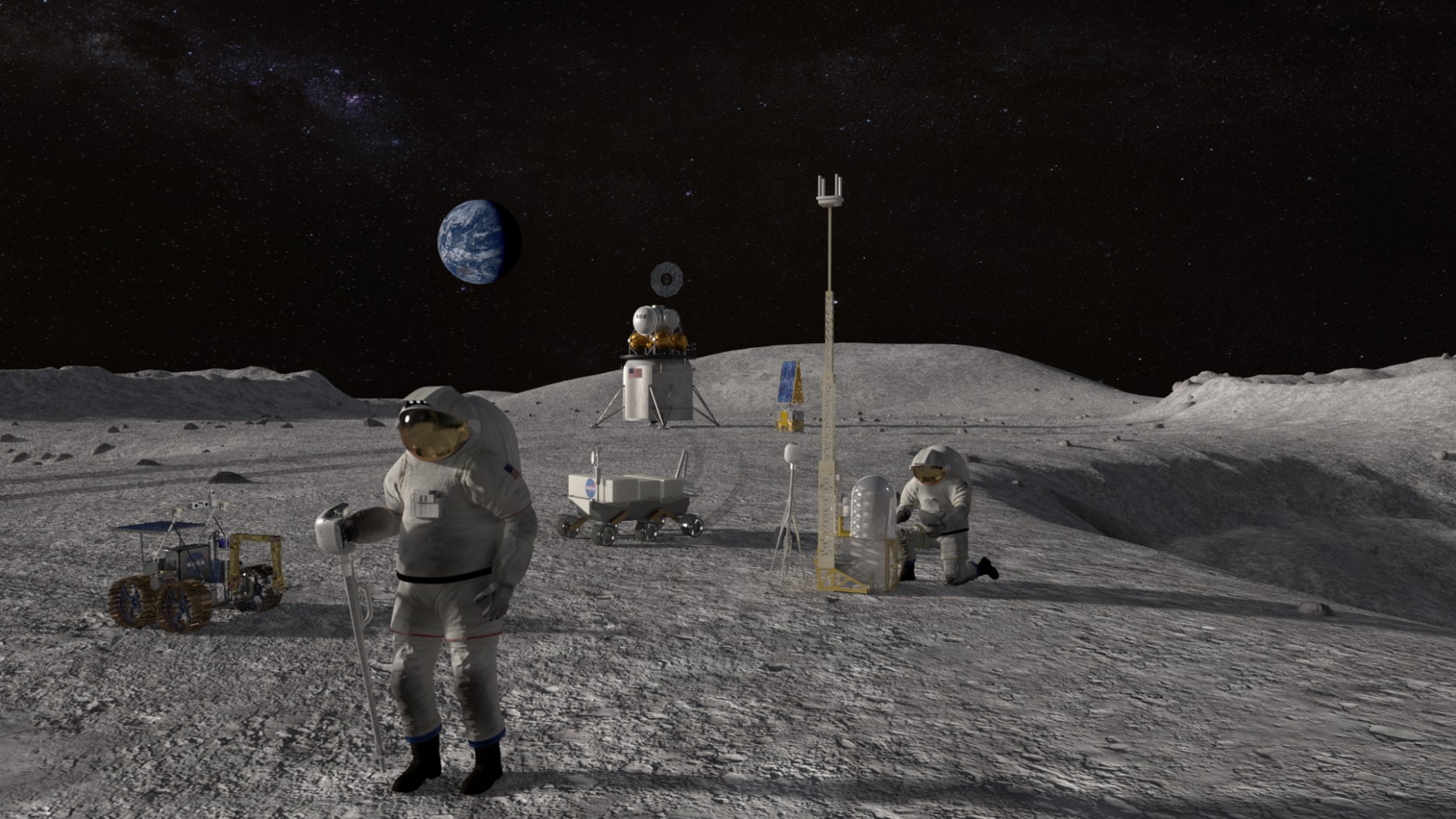
NASA’s Plan For Artemis After 2024
After many years of preparation, NASA is getting closer and closer each day to sending astronauts back to the surface of the Moon. These initial launches are planned to happen in 2024 if everything goes according to plan. The agency has created very detailed plans for each step of the mission. Here I will go more in-depth into NASA’s plans for the Moon and beyond far past 2024.
NASA has big plans for the future of humans and the Moon thanks to the upcoming Artemis mission. After the initial launches, however, the agency is planning on building the infrastructure, general systems, and robotic missions that will enable a sustained lunar presence. All of which will help us gain knowledge on many things including how to prepare for a future manned mission to Mars and beyond.
It has been around 50 years since the last human stepped foot on the Moon. While initial Artemis missions are meant to start in only a few years, some of the primary progress and innovation will happen in the years to follow. Here NASA along with private companies will work together and create an environment that humans can not only safely live in, but consistently work and progress in.
After 2024

Artemis has multiple missions each with a specific purpose. Artemis III is planned to be the first crewed Moon landing apart of the Artemis missions. After Artemis III, NASA’s overall plan is to conduct operations on and around the Moon that will help prepare the agency for the mission durations and activities that they will experience during the first human mission to Mars. In addition, it will also help with building the infrastructure, systems, and robotic missions that can enable a sustained lunar surface presence. To do this, NASA will develop Artemis Base Camp at the South Pole of the Moon.
Infrastructure – Some of the most interesting aspects of Artemis after 2024 has to do with the plans for different infrastructure across the surface and in orbit. Artemis Base Camp will be the first sustainable foothold on the lunar frontier. NASA will initially move to one to two-month stays to learn more about the Moon and the universe. The agency will also develop new technologies that advance the national industries and discover new resources that will help grow our economy. Overall, NASA mentions the base camp will help demonstrate America’s continued leadership in space and prepare us for humanity’s first mission to Mars. There are three primary missions elements of Artemis Base Camp. This includes the LTV that can transport crew around the site.
The Habitable mobility platform, for long-duration trips away from Artemis Base Camp, and the foundation surface habitat which will enable short-stays for four crew on the lunar South Pole. All of this combined with supporting infrastructure added over time such as communications, power, radiation shielding, a landing pad, waste disposal, and storage planning. Each of these elements comprises a sustained capability on the Moon that can be revisited and built upon over the coming decades. As of right now, a South Pole landing site has not been specifically determined. NASA however has multiple locations in the general vicinity that they are considering as future options. These sites may offer long-duration access to sunlight, direct to Earth communication, surface slope, and roughness that will be less challenging for landers and astronauts.
The exact spot where NASA picks will have a lasting effect on all of the future missions and discoveries on the Moon. The habitable mobility platform will be delivered to the lunar surface to expand the exploration range by tens of kilometers and mission duration on the surface from 7 days to 30-45 days, enabling potential Mars surface analog missions on the lunar surface. Some other key pieces of the Artemis Base Camp infrastructure are also delivered, including the foundation surface habitat, which will support a crew of up to four on the lunar surface, the lunar surface power systems, ISRU demonstrations, and more.
General Systems – Looking past some of the important pieces of infrastructure on the surface of the Moon, NASA is planning on key systems in other locations as well. Another core mission element of the sustained lunar presence that feeds forwards to Mars will be the expansion of habitation and related support systems at the Gateway. This evolution of the Gateway’s systems to include large-volume deep space habitation would allow astronauts to test, initially in lunar orbit, how they will live on their voyage to and from Mars. Gateway can also support our first Mars mission analogs on the lunar surface. For such a mission, NASA currently envisions a four-person crew traveling to the Gateway and living aboard the outpost for a multi-month stay to simulate the outbound trip to Mars, followed by two crew traveling down to and exploring the lunar surface with the habitable mobility platform, while the remaining two crew stay aboard.
The four crew are then reunited at the Gateway for another multi-month stay, simulating the return trip to Earth, before landing back home. These missions will be by far the longest duration human deep space missions in history. They will be the first operational test of the readiness of the long-duration deep space systems, and of the split crew operations that are vital to our approach for the first human Mars mission. An evolved Gateway habitation capability in lunar orbit will facilitate the methodical lengthening of mission durations. This approach will also allow the agency to test risk mitigation approaches for long-duration mission crew and element systems risks that are required for two-year Mars class missions.
Robotic Missions – The last important aspect of a future mission to the Moon revolves around using technology to our advantage. Mobility is a major part of the Artemis Base Camp. The LTV and the habitable mobility platform will enable long-term exploration and development of the Moon. In addition to its size, the Moon’s geography is complex, and its resources are dispersed. Looking at potential sites for Artemis Base Camp, such as near Shackleton Crater, shows the immense scale of the lunar geography. Robust mobility systems will be needed to explore and develop the Moon. the same is true for Mars, making the habitable mobility platform a particularly important element as NASA will need a similar type of vehicle to explore the Red Planet. All of this different technology and more will play a vital role in expanding human capabilities on the Moon in more ways than just expanding and traveling the surface. In addition, there will be an extensive amount of robotic and general equipment each with a specific purpose for the Artemis mission after 2024.
Conclusion
Artemis and returning humans to the surface of the Moon is getting closer and closer to becoming reality each day. While the agency has quite an ambitious schedule, initial missions are still planned for 2024. However, it’s after these first missions when a lot of progress, innovation, and change is expected to happen on and around the Moon. Here NASA will combine high-quality infrastructure, general systems, and robotics to help facilitate a successful return. All of which is meant to prepare us for future missions to Mars and beyond. We will have to wait and see how NASA progresses and the impact it has on the space industry.
